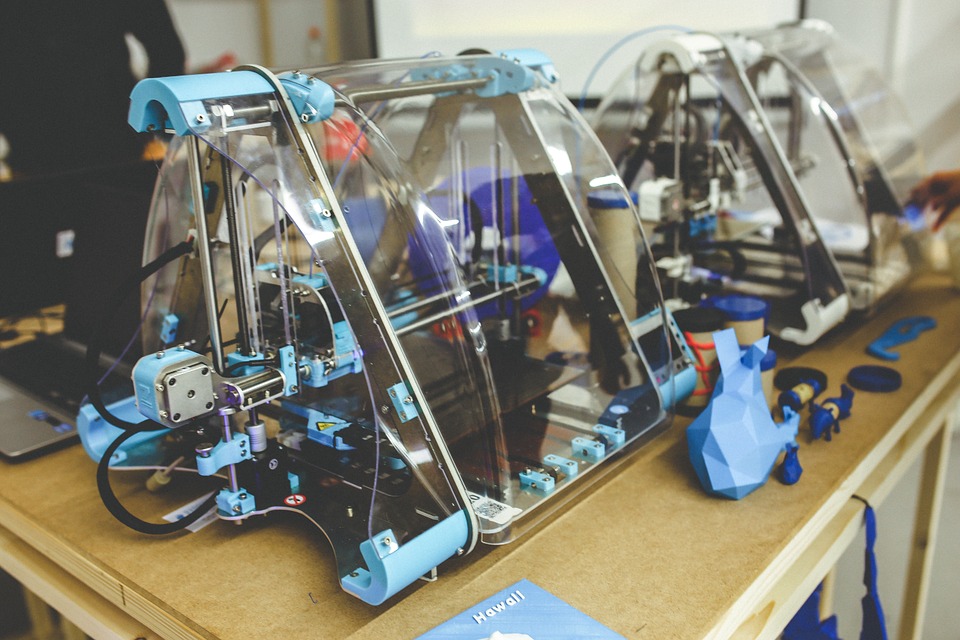Because several manufacturing companies are now shifting towards more modern technological solutions, no manufacturing business would want to be taken out of the competition if they can do something about it. The reason for the shift is to improve the companies’ operations even to the point of automation.
Competitive businesses in the manufacturing industry are typically equipped with state-of-the-art laser cutting machines, bending equipment, tube processing machines, and software solutions.
The advance of technology won’t stop here, and companies will continue to adopt advanced solutions for their operations, making them manufacturing tech trends in the 2020s.
Some of the mentioned manufacturing tech trends are listed below.
4 Manufacturing Tech Trends 2020

1. Smart Accessories
The manufacturing industry is a dangerous field where workers will need to allocate their full attention to the work at hand, and having to carry any gadgets for any reason can limit their productivity and compromise their safety. Through smart accessories, workers won’t have to free up their hands when handling their gadgetry.
Wearable technology allows workers to wear their gadgets on their bodies, letting them use such items with only a minimal movement of their hands.
Such technology will enable them to access information regarding the workers’ health, location, or other vital information, depending on the type of smart accessory used.
Workers can communicate with each other remotely through smart accessories without having to stop their work in the production line.
Wearables equipped with sensors can also track each workers’ movements to prevent accidents from happening mainly due to poor worker visibility.
Companies that have their workers use smart accessories can also find that their products are of higher quality and are safer for their customers since their employees can check on their products’ status before they leave the production line.
Wearables equipped with sensors and are connected to the cloud can allow people to check on the items’ electrical components to make sure that they’re welded at the right temperature.
Such technology can also allow people to use VR and AR technologies, which improves man-machine collaboration. Wearables with AR capabilities can display important information regarding a product on a worker’s field of vision as well as be used to train beginners in the use of their factory’s equipment.
VR technology can also immerse a worker or a trainee in the work environment remotely either to monitor the production line or to train new employees.
2. Additive or 3D Manufacturing
Because the chances of human error in a factory’s production line are relatively high due to how mundane the workers’ task is, manufacturing companies can use 3D printers to mitigate this problem and improve their production rate. 3D printers can produce parts much quicker and cheaper while maintaining the excellent quality of their products.
Additive manufacturing also lets companies produce a limited number of prototypes for their new products, keeping them from needlessly expending significant amounts of resources on sample products when using traditional manufacturing lines.
Additive manufacturing can also be automated, allowing a factory to continuously manufacture items even when their primary workforce’s shift is over.
3. Smart Factories
The continuous development of technology lets manufacturing companies automate their operations, and assets like automated 3D printers, bending machines, and laser cutting systems are proof enough that the possibility of having automated factories is possible.
Fully automated factories, however, require more than a few automated solutions to function.
Automated solutions can optimize a company’s workflow by eliminating the chances of human error due to how dull their employees’ works are. This is achieved because the potential of the company’s machines is maximized through automation.
Effective automation of the company’s machines still requires the use of Artificial Intelligence and 5G internet connection for a factory to be considered a smart factory.
Smart factories use robots and AI to manufacture items even without human intervention, besides the necessity of initiating the entire process. Manufacturing companies that use such solutions will have little reliance on an active workforce, which also keeps human errors in check.
Other people might see companies that strive to have smart factories in a negative light since they’re limiting employment opportunities, but little do they know that manufacturing businesses are slowly suffering from having a limited and aging workforce due to a general lack of interest in dull working environments.
By using AI and robots, companies can plug the gap introduced by workforce shortages while presenting new employment opportunities for the younger generation.
Smart factories also use 5G to unify the different internet-connected automated solutions a factory uses through the cloud.
By consolidating the various solutions, a company would be able to monitor its assets and conduct predictive maintenance to ensure that its equipment will remain in optimal condition and function properly, even with limited human intervention.
Smart factories would typically run for 24 hours a day, something that a human workforce cannot achieve unless a company would hire enough workers to fill three shifts.
Such is a tall order since businesses can’t afford the expenses associated with it and because the industry lacks the necessary number of workers to achieve it.
4. More Efficient Predictive Maintenance
As stated above, smart factories would allow various manufacturing companies to conduct predictive maintenance on their assets since people can monitor them remotely and manage them as they’re connected to the cloud.
The seamless integration of AI, 5G, and various pieces of machinery in a factory allow a company to keep it from suffering from needless downtime that costs a few hundred thousand dollars per hour and to benefit from being able to extend the machines’ lives by years.
Conclusion
The various technological trends in the 2020s are geared towards making the manufacturing industry much safer and more efficient by equipping workers with smart accessories and making factories smarter, which allows companies to maintain their equipment instead of simply repairing them when they’re damaged.
Manufacturing companies that will invest in these technological trends will eventually be able to produce more high-quality products with little to no downtime. Such investments would contribute to the further development of the mentioned tech trends.
Read Also:
- Future Tech Trends 2020 – A Prediction
- 7 Latest IT Trends Can Have A Startling Impact On Your Small Business!
Author Bio: Sean Felix Lim
















